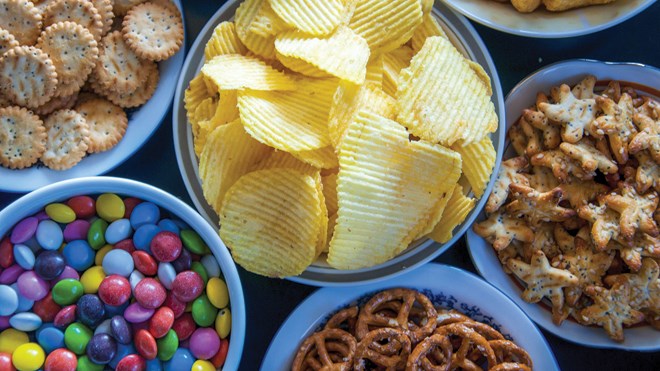Obesity is increasing worldwide, especially among children and teenagers. More than 150 million children in the world are obese in 2019. These children have increased risk of heart disease, cancers and Type 2 diabetes.
Teenagers with obesity are likely to remain obese as adults. If these trends continue, 70 per cent of adults aged 40 years could be either overweight or obese by 2040.
I am a neuroscientist and my research investigates how diet changes the brain. I want to understand how unhealthy diets impact the developing brain, and also why young people today are so prone to developing obesity.
Adolescents are the greatest consumers of calorie-rich “junk” foods. During puberty, many children have an insatiable appetite as rapid growth requires lots of energy. Heightened metabolism and growth spurts can protect against obesity, to an extent. But excessively eating high-calorie junk foods and increasingly sedentary lifestyles can outweigh any metabolic protection.
The teenage brain is vulnerable
The teenage years are a key window of brain development. Adolescence coincides with a new-found social autonomy and the independence to make personal food choices.
During adolescence, connections between different brain regions and individual neurons are also being refined and strengthened. The adolescent brain is malleable because of increased levels of “neuroplasticity.”
This means the brain is highly receptive to being shaped and rewired by the environment — including diet. In turn, these changes can become hardwired when development is complete. So the adolescent brain is vulnerable to diet-induced changes, but these changes may endure through life.
Resisting junk food is tough
Neuroscientists use functional brain imaging to examine how the brain responds to specific events. Brain scans show that the prefrontal cortex — a key brain area for behavioural control and decision-making — doesn’t fully mature until the early 20s.
The prefrontal cortex controls and overrides urges triggered by events in the environment. Resisting eating a whole bag of candy or buying cheap junk foods can be particularly difficult for teenagers.
Voracious drive for rewards
In contrast to the immature prefrontal cortex, the brain’s reward system — the mesocorticolimbic dopamine system — is fully developed at a much earlier age.
Teenagers are particularly drawn to rewards, including sweet and calorie-dense foods. This is due to increased numbers of dopamine receptors in the adolescent brain, so the feeling of reward can be exaggerated. Frequent stimulation of the reward system results in enduring brain adaptations.
During adolescence, these changes may cause long-lasting shifts to the balance of brain chemicals.
Taken together, the teenage brain has a voracious drive for reward, diminished behavioural control and a susceptibility to be shaped by experience.
This manifests as a reduced ability to resist rewarding behaviours. So it’s not surprising that teenagers prefer to eat foods that are easy to obtain and immediately gratifying, even in the face of health advice to the contrary. But what are the enduring brain consequences?
Transcranial magnetic stimulation
Functional imaging studies show brain activity during tasks or viewing images of foods. Brain circuits that process food rewards are more active in adolescents with obesity compared to those considered normal weight.
Interestingly, lower activity is seen in regions of the prefrontal cortex. This shows that obesity can both heighten activation of the reward system and reduce brain activity in centres that can override the desire to eat.
Importantly, successful weight loss in adolescents restores levels of activity in the prefrontal cortex. This provides critical knowledge that the prefrontal cortex is a key area of the brain for controlling food intake, and that diet interventions increase activity in brain regions that exert self control.
Transcranial magnetic stimulation (TMS), a way scientists can modify brain activity in the prefrontal cortex, can change inhibitory control of eating behaviour. Repeated TMS treatment could be a new therapy to restore cognitive control over eating, helping with long-term weight loss.
Exercise boosts brain plasticity
Excessively eating junk foods during adolescence could alter brain development, leading to lasting poor diet habits. But, like a muscle, the brain can be exercised to improve willpower.
Increased brain plasticity during adolescence means the young mind may be more receptive to lifestyle changes. Physical exercise boosts brain plasticity, helping to set in place new healthy habits. Identifying how the brain is changed by obesity provides opportunities to identify and intervene.
Functional brain imaging adds a new layer of information where clinicians can identify at-risk individuals and track brain changes during nutritional and lifestyle interventions.
Even more, TMS could be a new treatment approach to improve re-calibration of the young brain to prevent enduring changes into adulthood.
Amy Reichelt, BrainsCAN Research Fellow at Western University’s Schulich School of Medicine & Dentistry, Western University
This article is republished from The Conversation under a Creative Commons license. Read the original article.
